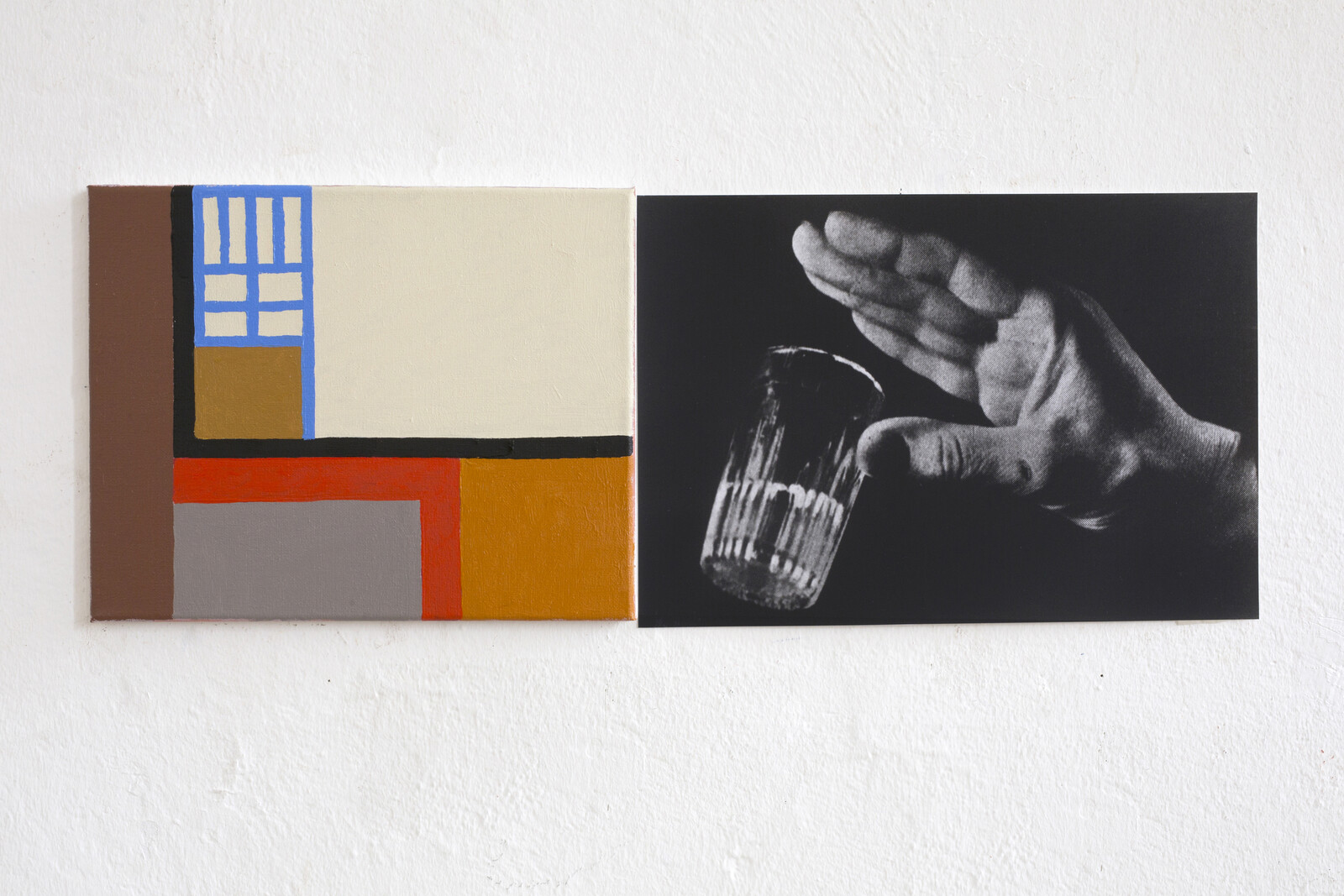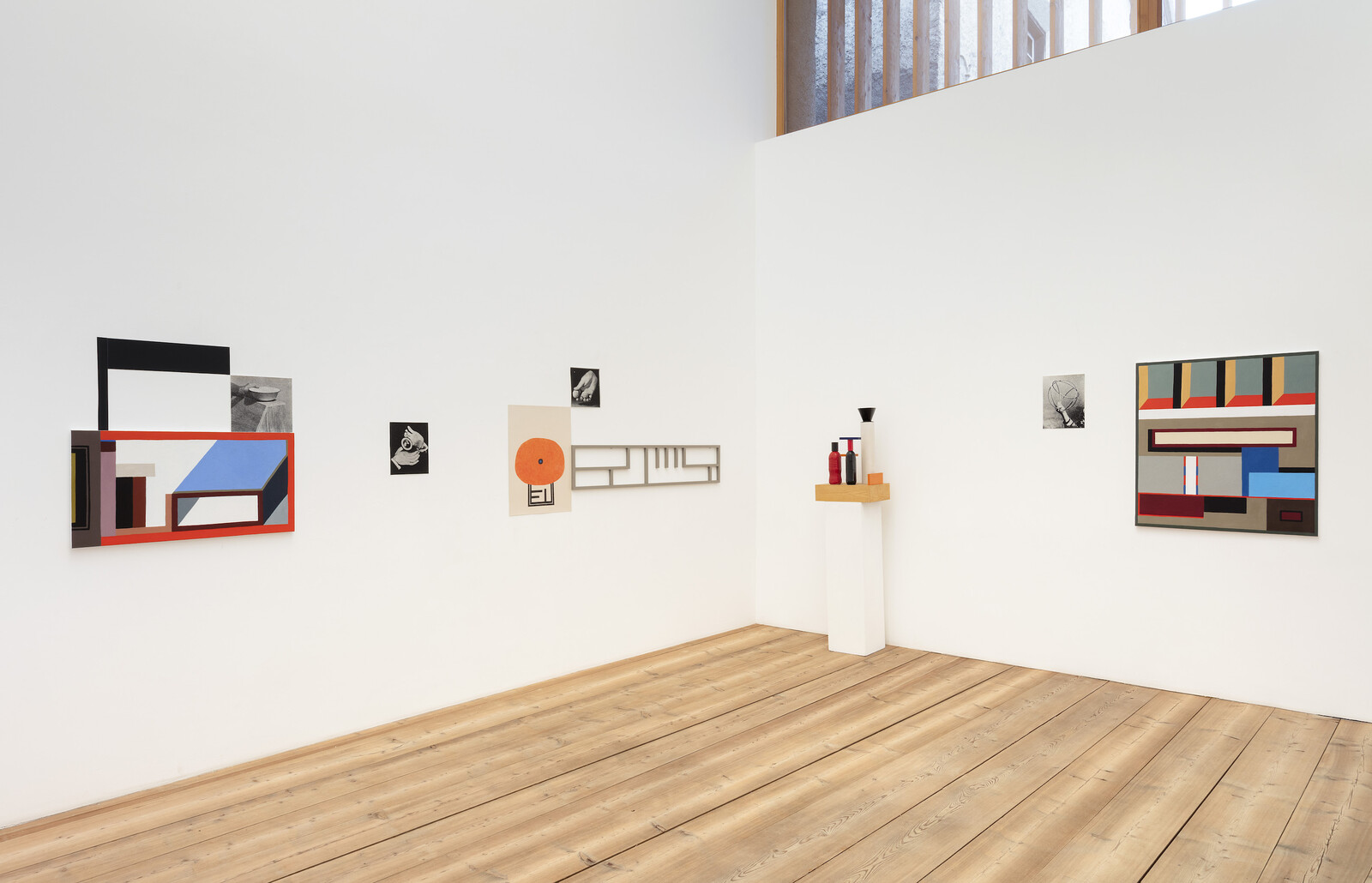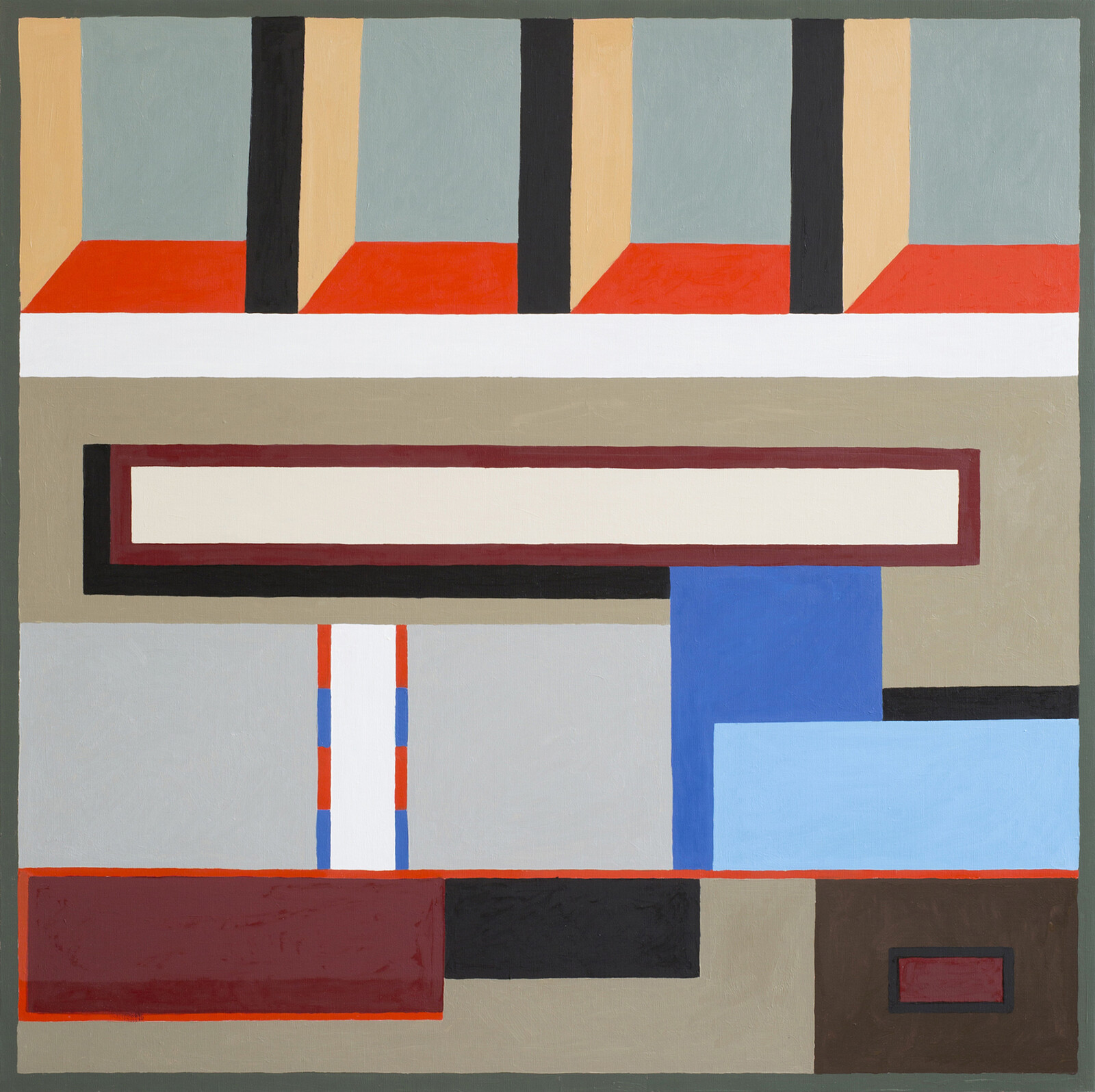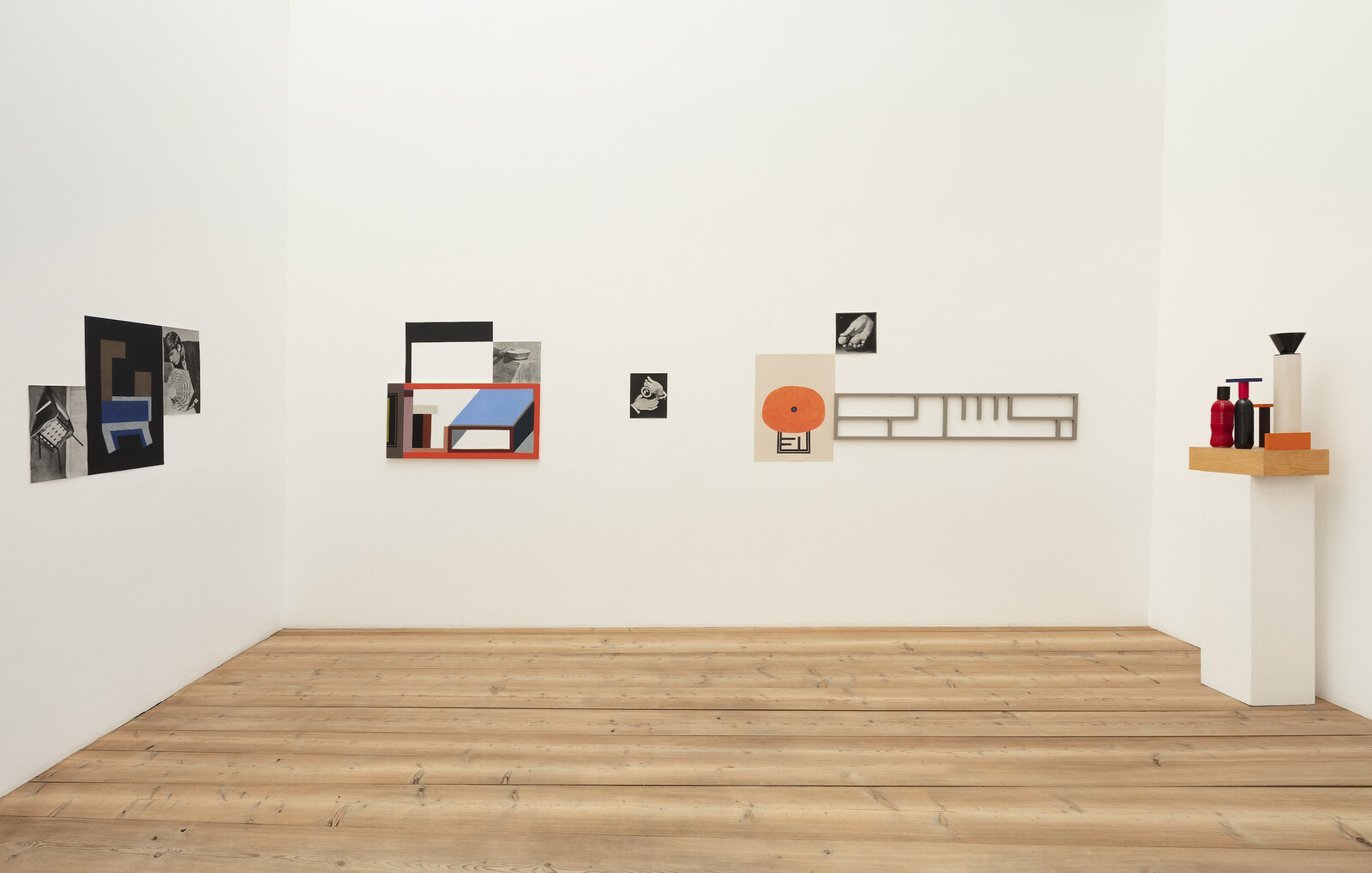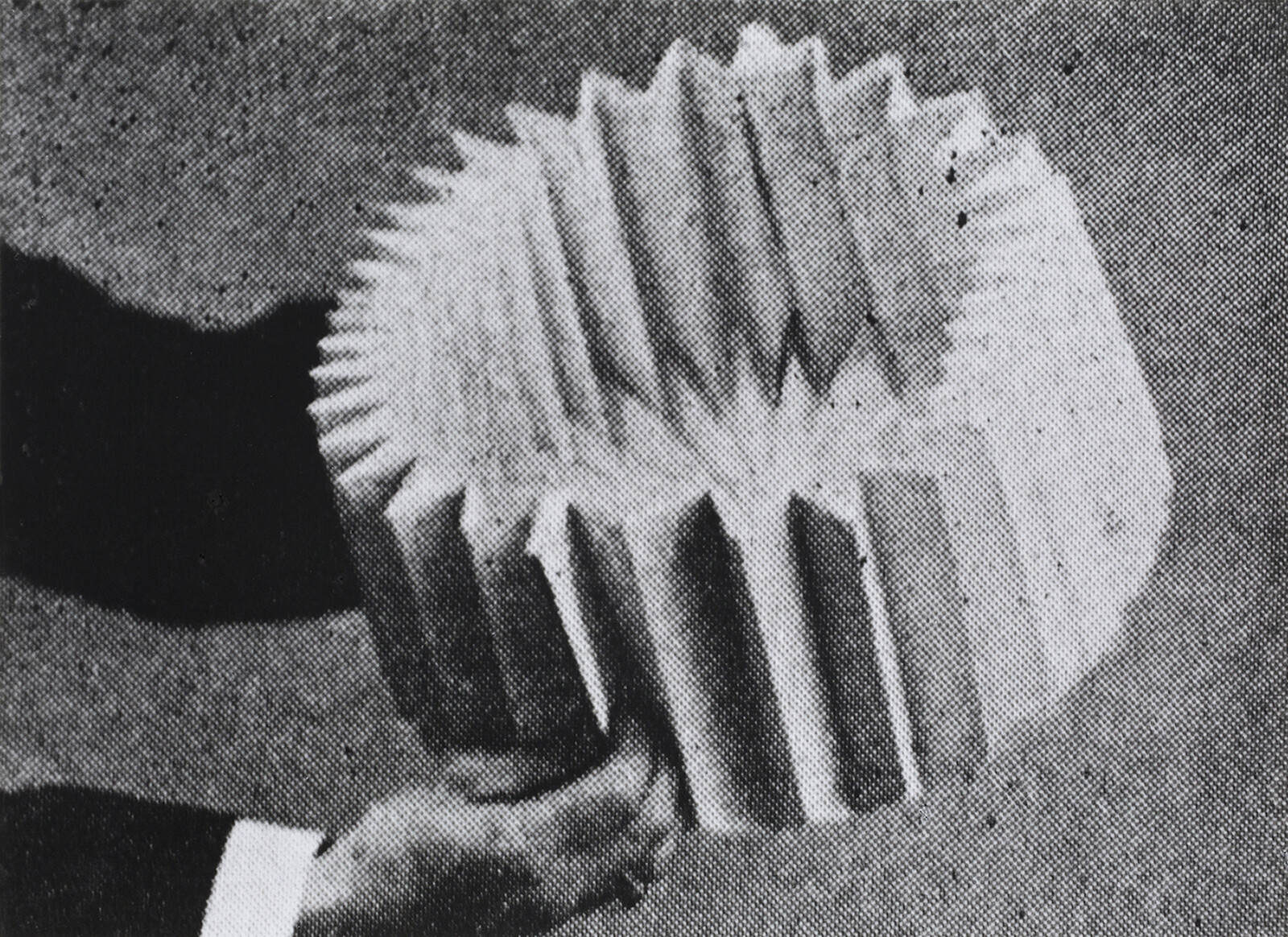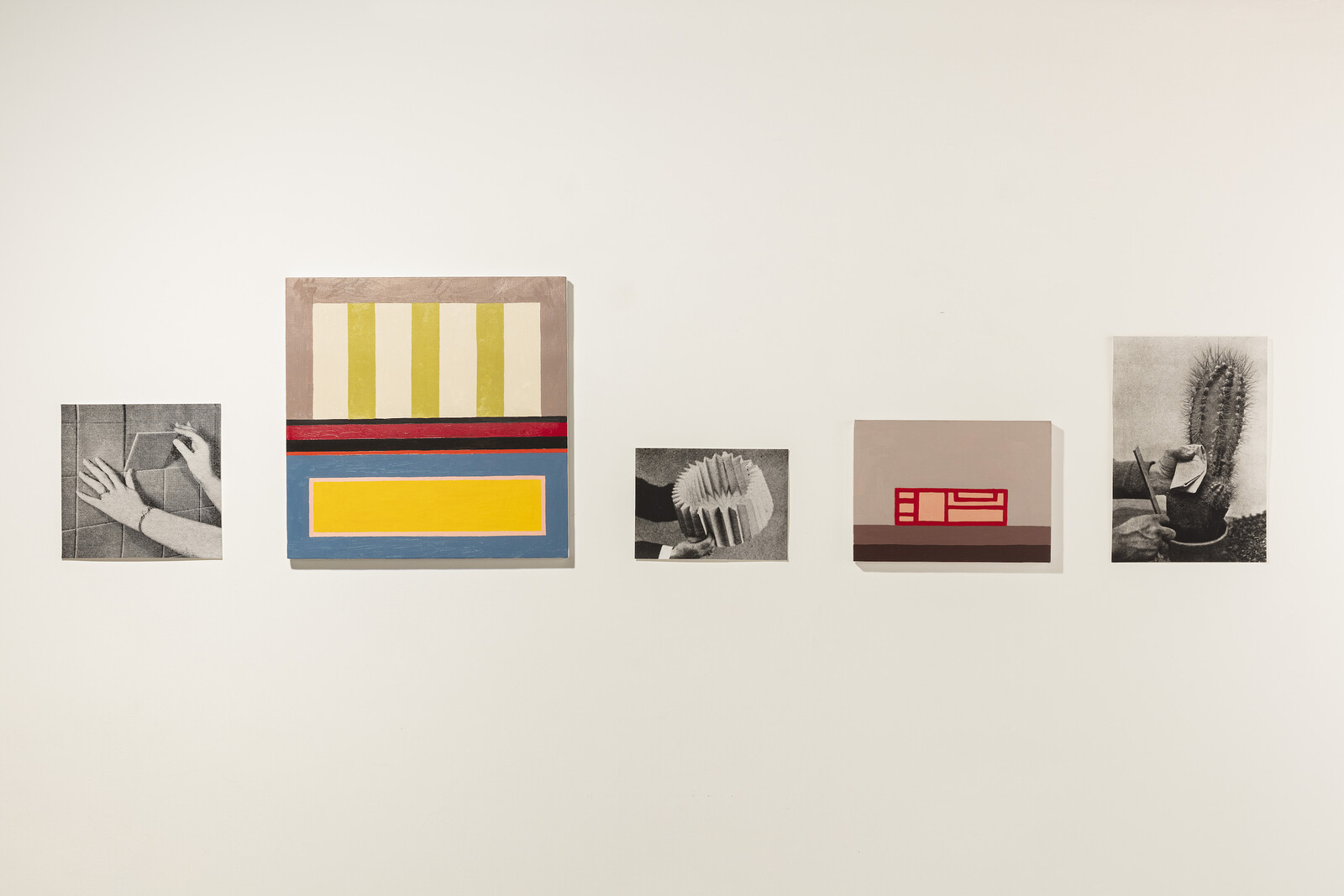In another interminable lockdown, the gentle winter colors are the clearest indications of time passing in Switzerland’s Engadin valley. But a show at Monica de Cardenas in Zuoz, a nearly monochrome town surrounded by the silent Alps, offers a very different atmosphere to the world outside: a vivid and humorous joint presentation of recent works by Nathalie du Pasquier and Alessandra Spranzi. The two artists’ aesthetics at first sight have little in common: Spranzi’s practice involves found images, often gleaned from unglamorous contexts such as manuals or the classified ads sections in daily newspapers, which she cuts out, rephotographs, crops, resizes, and upcycles into black-and-white silver gelatin prints, allowing herself to be “carried away by the gaze of others.”1 By uprooting her chosen photographs and washing out their primary meaning, Spranzi reveals the nonchalance with which one can alter and aestheticize the message carried by an image.
In Mano con bicchiere rovesciato (L’insieme è nero) [Hand with Upturned Glass (The Whole is Black)] (all works 2020), a palm holds up an upside-down utensil against a dark background. The decontextualized action demonstrates how easily gestures can lose their value and be rendered absurd. A group of Spranzi’s black-and-white photographs shows a set of mysterious pantomimic elements: disembodied hands play with strings, demonstrate card decks, pick up spools of thread. Esercizi per la mano del prestigitatore (L’insieme è nero) [Exercises for the Magician’s Hand (The Whole is Black)], a triptych of instructions meant to help one perfect one’s illusionistic skills, provides viewers with a clue towards interpreting these curious signals—the allusion to magic foregrounds the enchanting, animating potential of images and gestures.
When displayed next to Du Pasquier’s multicolored, energetic abstractions, these hands appear to be engaging in the creation of the paintings themselves. Even though Du Pasquier, one of the founding members of the Memphis group, moved away from working in three dimensions more than thirty years ago, her work on canvas remains overshadowed by her accomplishments in the design field. Yet these paintings deserve more attention not only by reason of their careful composition and thoughtful coloring: they represent an organic development of the artist’s interest in objects’ physicality, and the ways in which they transform the space around them.
Du Pasquier has spoken of a passion for “arranging things,” and this attention to detail is apparent in the spatial structure of the exhibition.2 Her works play with scale, height, and thickness, transforming the gallery space into a theatre-like set. The paintings displayed at Monica de Cardenas explore scenographic and illusionistic concepts: in the large Untitled, an architectural trompe l’oeil, Du Pasquier contrasts bright orange lines with dim brown surfaces, an arrangement which oscillates between an abstract composition, a modest Zimmerbild, and an architectural blueprint.
Both Du Pasquier’s and Spranzi’s practices rely on the depth afforded by an informed “second glance.” Les Jeux de Mains #6, a joint creation by the two artists (part of a cycle under this title), consists of a photographic print combined with a cheerful yet disciplined oil painting. The upper component, one of Spranzi’s signature appropriations, depicts a gray palm placing a bowl on a piece of furniture. The lower element, devised by Du Pasquier, shows a vivid red frame enclosing a box-shaped structure. This curious pairing of different visual media prompts viewers to think about the way they experience space and form, to be attentive to what lies beneath the surface of an image, and what possibility may lie within.
Alessandra Spranzi in conversation with Luca Panaro, Flash Art (September 8, 2015): https://www.monicadecardenas.com/wp-content/uploads/2020/10/A.-Spranzi-Flash-Art-8-Sept-2015.pdf (translation by the author).
Nathalie Du Pasquier, “From the beginning, I did not belong to the design world or to the art world” (in conversation with Allie Biswas), Studio International (October 16, 2017): https://www.studiointernational.com/index.php/nathalie-du-pasquier-i-did-not-belong-to-the-design-world-nor-to-the-art-world.
